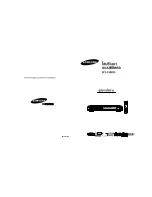
The full scale output of the sensor is:
1.238 mV/W/m
2
x 100 W/m
2
= 123.8 mV
This should fit the selected range, so an amplification of 1x (input range 200 mV) is the right
choice. From the table you can see that this range gives you 20000 counts.
Step 2: Determine the display reading. Enter the figure that the LI-19 should display at full
scale in the multiplier field. You can use all 4 available digits, keeping in mind that we can add
a decimal point later. So in this case we can enter 1000 for the multiplier.
Enter the number of counts that correspond with the full scale output of the sensor (here
20000 counts * 123.8mV / 200mV = 12380 ) in the divider field.
Step 3: Set the decimal dot to 888.8. The display will then read 100.0 at 100 W/m
2
input on
the sensor.
Step 4: Select if you want to see negative values or not.
Step 5: Program the settings into the LI-19.
One more example.
We have a sensor with a calibration factor of 4.56 μV/W/m
2
. We want to measure in the open
field where the maximum expected irradiance is 1100 W/m
2
.
Step 1: Set the input amplifier to give the required range. Select the ‘Sensor settings’ page.
The full scale output of the sensor is:
4.56 μV/W/m
2
x 1100 W/m
2
= 5.016 mV
This should fit the selected range, so select an amplification of 32x, that gives an input range
of 6.25 mV. From the table you can see that this range gives you 6250 counts.
Step 2: Determine the display reading. Enter the figure that the LI-19 should display at full
scale in the multiplier field. You can use all 4 available digits, keeping in mind that we can add
a decimal point later. So in this case we can enter 1100 for the full scale display value in the
multiplier field.
Enter the number of counts that correspond with the full scale output of the sensor (here 6250
counts * 5.016mV / 6.25mV = 5016 ) in the divider field.
Step 3: Set the decimal dot to 8888. The display will then read 1100 at 1100 W/m
2
input on
the sensor.
Step 4: Select if you want to see negative values or not.
Step 5: Program the settings into the LI-19.
Data logger
The PC software is used to enter the data logger setup, and to transfer the setup to the LI-19.
When the LI-19 is programmed with a new datalogger setup, the logger memory in the LI-19
is erased, and then the new settings are used to start a new logging sequence. The logging
Summary of Contents for LI-19
Page 1: ...LI 19 read out unit datalogger with µV sensitivity v 5 1 ...
Page 11: ......






























